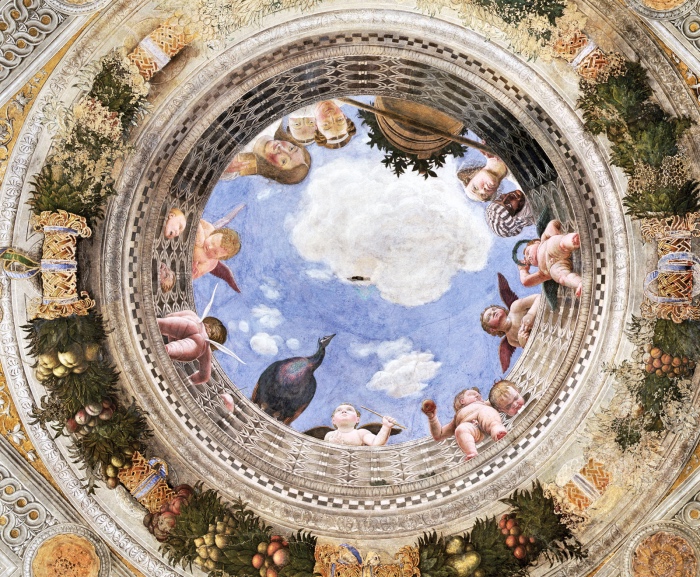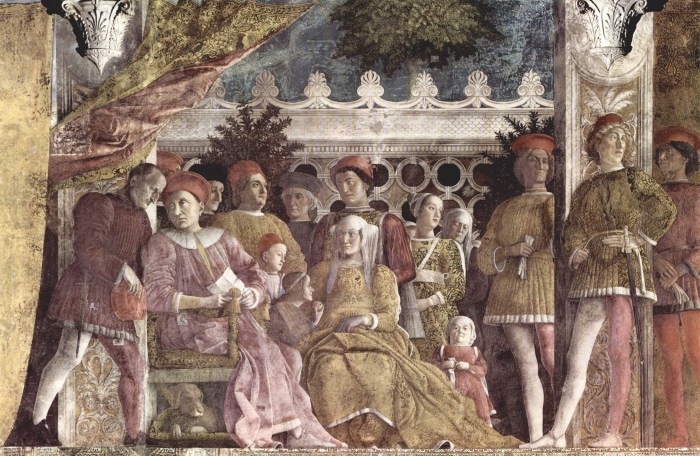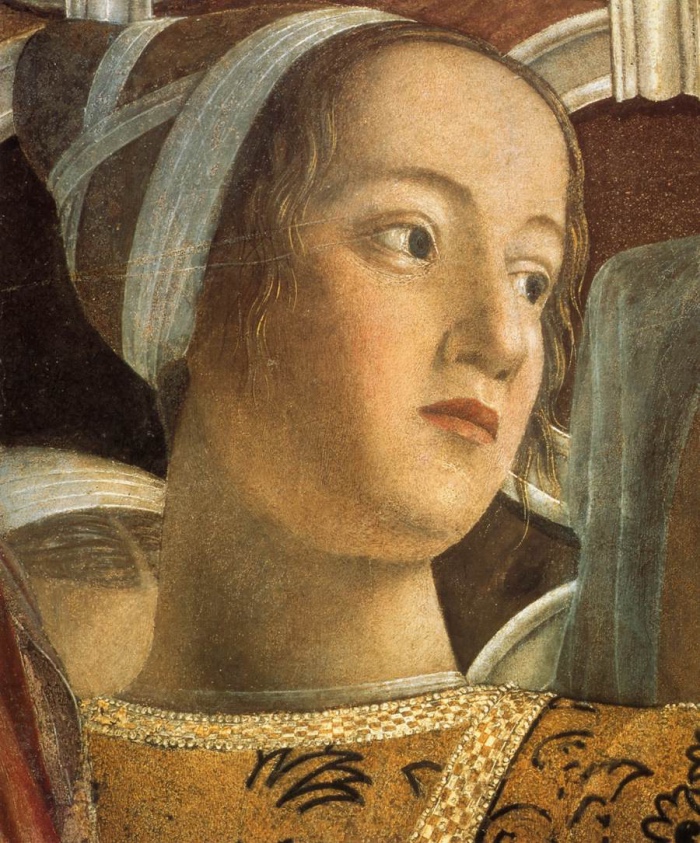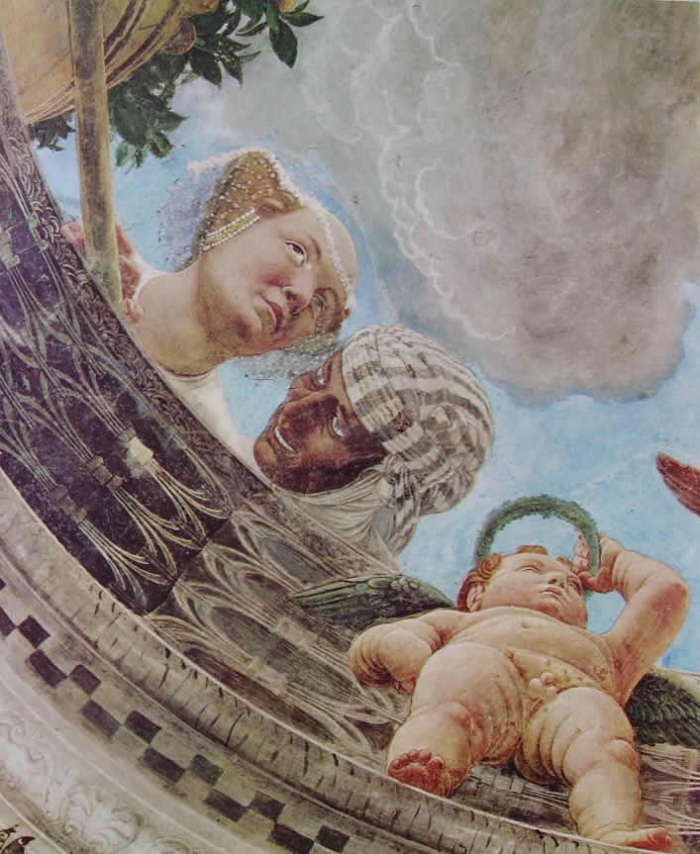The Bridal Chamber by Mantegna

THE BRIDAL CHAMBER BY MANTEGNA: CURIOUS FACTS AND DESCRIPTION OF THE WORK
Admiring the Bridal Chamber by Mantegna in Mantua is always thrilling and, even though I’ve already seen it, every time I enter this room is like the first time.
I arrived on a cold January morning after a tour discovering works by Giulio Romano in Mantua and in this post I’ll tell you curious facts about one of the great masterpieces to see in Mantua, the Bridal Chamber by Mantegna.
The Bridal Chamber by Mantegna: curious facts and description of the work

The Gonzaga Family
I returned to Mantua for the second time, a few weeks later, to discover the city through the stories of the Gonzaga family, one of the most important and long-lived noble families in Italian history. The Camera degli Sposi in Mantegna was the first stop on this journey that I made thanks to the City of Mantua.
WHY MANTEGNA PAINTED THE BRIDAL CHAMBER AND WHERE TO ADMIRE IT
The Bridal Chamber is Andrea Mantegna’s masterpiece.
Painted between 1465 and 1474 for Ludovico III Gonzaga and his wife Barbara of Brandenburg, it is located inside the Ducal Palace in Mantua and it was a reception room. In fact, almost certainly, the painting coincides with the designation of Francesco Gonzaga, Ludovico’s son, as cardinal on January 1st 1462.
DESCRIPTION OF THE BRIDAL CHAMBER BY MANTEGNA
The decoration of the Bridal Chamber by Mantegna depicts scenes of life at court and, above the fireplace, you can see Ludovico Gonzaga, surrounded by members of his family, while receiving the news of the appointment of his son Francesco as cardinal. Each character is portrayed accurately and you can recognize his wife Barbara and children, while in the lunettes and on the ceiling are the symbols of the Gonzaga family, mythological subjects and portraits of Roman emperors, whose aim is to convey the prestige and power of the Dukes of Mantua to visitors.
Looking at the ceiling, however, astonishment prevails because Mantegna created the optical illusion that the ceiling is broken down, making spectators look a blue sky through an oculus on which some putti and female figures look out.

Detail of the Bridal Chamber
THE OCULUS OF THE BRIDAL CHAMBER
Surrounded by a garland of flowers, fruits and ribbons, the oculus painted on the vault opens into a blue sky, soft clouds and on a balustrade where foreshortened female faces, winged putti, a peacock and a basket with a citrus tree are painted in “di sotto in su” (“from below, upward”).
Andrea Mantegna created an amazing optical illusion for that time, which still today amazes us. In fact, when you look upwards you have the impression that the ceiling has really an opening towards the outside. Andrea Mantegna, however, was a brilliant artist and that is not the only extraordinary view he Painted during his career. In fact, also the perspective he used to describe the Lamentation over the Dead Christ is very famous.
THE BRIDAL CHAMBER: CURIOUS FACTS
There are two curious facts about the Bridal Chamber by Mantegna.
First, among the figures looking out the oculus is a black woman, who is one of the many slaves working in the villas and Renaissance palaces also in Mantua.
The second curious fact is a monochrome hidden among the vegetation of a fake pillar which represents the mystery of the Bridal Chamber; but according to some scholars it’s Mantegna’s face who would paint his self-portrait as his signature.

La schiava nera
Follow me on:
About me
In this blog, I don't explain the history of art — I tell the stories that art itself tells.


